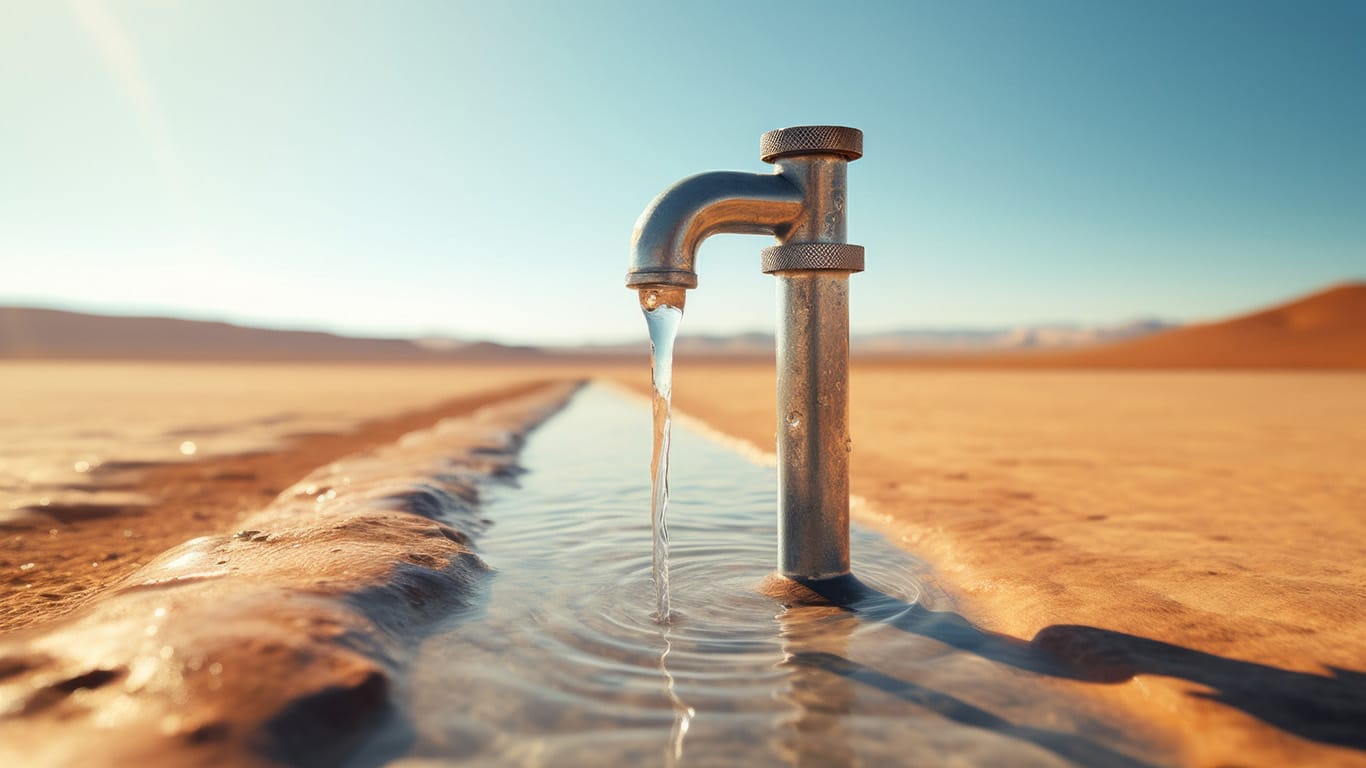There are many candidates and propositions on the election ballot this year, but the six candidates running to fill the Central Arizona Water Conservation Board could play an important role in two years when the current rules governing how much water Arizona residents receive from reservoirs like Lake Powell and Lake Mead from the Central Arizona Project or (CAP) expires.
MORE NEWS: How city of Phoenix, CAP are addressing water supply issues
The Central Arizona Project (CAP) is the governing agency that operates a 336-mile-long canal that moves water from western Arizona, where the Colorado River flows, to water users in Maricopa, Pima and Pinal county.
The 2007 Colorado River Basin Interim Guidelines aimed to develop additional strategies for ongoing drought, decreased system storage and growing demands for water. It is set to expire in 2026, so it’s time for negotiations between Colorado River Basin states about current conditions and future outlooks to take place.
Terry Goddard, the current CAP Board President who is also running for reelection, said, “this board is really one of the key ingredients in Arizona for arguing and lobbying for the next round of water allocations.”
Goddard was the Mayor of Phoenix from 1984-1990 and was the Arizona Attorney General from 2003-2011. He was born in Tucson, but earned his law degree at Arizona State University.
The Colorado River Basin provides water for roughly 40 million people, and for five and a half million acres of irrigated agriculture.
Sarah Porter, the Director of the Kyl Center for Water Policy said, “seven states, two countries and 29 sovereign tribes share water from the Colorado River.”
The Department of the Interior and the Bureau of Reclamation manage the Colorado River Basin. It is divided into the Upper Basin—Colorado, New Mexico, Utah, Wyoming, and part of northeastern Arizona—and the Lower Basin, which includes Arizona, California, Nevada, and Mexico.
The United States Congress authorized the construction of the CAP canal system in 1968 under the Colorado River Basin Act. This bill required the facilitation of a taxing entity to ensure repayment of debt owed to the federal government.
Porter said the CAWCD board is really just the CAP. The acronym CACWD just refers to the people on the board that manage the canal.
According to Goddard, the board consists of 15 members, and the number of representatives from each county is proportional to population. Currently there are 10 members from Maricopa county, four from Pima county and one from Pinal county.
The Maricopa county candidates this year consist of four incumbents, Lisa Atkins, Terry Goddard, Heather Macre and April Pinger-Tornquist, and two challengers, Brian Biesemeyer and Rudy Fischer.
Porter said, “people who are on the CAP board are performing an act, a volunteer act for the good of the community.”
Goddard said that there are lawyers, engineers, landscape architects and other specialists that make the board diverese. For example, Atkins has a political background from when she held the position of congressional office manager for Bob Stump for over twenty-five years.
“You need experience, you need connections, you need expertise,” Goddard said.
Goddard said that the CAP only delivers to three out of the fifteen counties in Arizona. Still, the CAP services about 80% of the state’s population, and about 90% of the state’s economy.
The best precipitation for restoring water table levels is snow. It sticks to the ground, melts slowly, and is better absorbed by the soil.
According to Goddard, “the Rockies are two-to-three degrees warmer now than they were when they did the original condition of water in the Colorado River.”
Porter said roughly 80% of water in the system comes from snowpack in the upper Rockies.
From climate records, temperatures have been observed to be trending upwards, and there is more variability in yearly precipitation.
Goddard expects conditions in the western US to continue to become increasingly warmer and drier.
Precipitation will fall as rain instead of snow when there are warmer temperatures. Water runoff occurs, and the water table does not replenish as effectively.
Godardd said that they’ll take whatever they can get, but less snowpack and more rain impacts river levels.
Lake Powell and Lake Mead have over a 50 million acre feet capacity for water storage.
“The reservoirs have been our rock, really, they have been the reason the CAP and all of the southern Colorado Basin hasn’t gone dry,” Goddard said.
Porter said that these reservoirs have seen “persistently declining levels.” The water levels go up, but they do not increase like they did in the past.
According to Porter, “the one and a half million acre feet of water that evaporates off Lake Mead every year does not get accounted for, or replenished.”
Rudy Fischer, one of the challengers seeking a seat on the board, has previous experience on the Water Agency Board of Directors in Monterey, California.
According to Fischer, both the Upper and Lower Basin theoretically receive seven and a half million acre feet of water per year allotted under the 1922 Colorado River Compact.
The seven and a half million acre feet of water for each basin is theoretical because the amount of water available in the river varies. There is much less water available now than in 1922.
There is a shortage of water in the system, and cities, like Phoenix that are growing in size and population, now have a greater demand for water.
Porter said, “The compact states that the Upper Basin has an obligation to deliver.
It’s really 10 times seven and a half million acre feet every 10 years, so 75 million acre feet every 10 years.”
The Upper Basin states water allocation is divided into percentages, so the total amount of water gets split into the percentages agreed upon in 1922. Colorado with 51.75%, Utah with 23%, Wyoming with 14% and New Mexico with 11.25%.
The Lower Basin divides water into designated amounts. Per the 1922 Compact, California gets 4.4 million acre feet, Arizona gets 2.8 million acre feet and Nevada receives 0.30 million acre feet.
The 1968 Colorado River Basin Act needed support from California to be passed. At the time, California had 40 congressmen while Arizona only had three. Arizona agreed to have the lowest priority. When the Upper Basin needs to make cuts to the amount of water they deliver it comes from the Lower Basin. Where the Lower Basin stands, those cuts will come from Arizona, and in Arizona, those cutbacks come from the CAP.
Fischer said it will take tough negotiations, and the examination of scientific data to achieve more equitable allocation of water.
According to Goddard, “you can’t balance the books on the backs of the CAP.”
“Convince your friends that this is an important issue, and they need to vote for the right people,” Fischer said.




